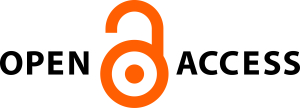An Analysis of Microfinance in Kashmir
Abstract
One of the most important objectives of development planning in India is poverty alleviation. Various
approaches to alleviate poverty have been undertaken by the Government of India. The agenda for financial
inclusion involves creating specific environment through which the poor across the country have open, safe,
secure and affordable access to various financial products. Microfinanceis one such strategy for inclusive
growth, which can be explained as provision of financial services such as loans, savings, insurance,
financial literacy, etc. Those who promote the concept of microfinance as an inclusive development tool
believe that such unrestricted access will help in poverty alleviation and uniform growth. Various steps have
been taken in this direction since Independence by Government, Financial Institutions, Microfinance
Institutions, and NGOs which include SHG-Bank Linkage Programme as one such initiative.
Microfinance in J&K is still in its initial stage; from the formal sources like Public Sector Commercial
Banks, District Cooperative Societies, Regional Rural Banks and Private Sector Commercial Banks, which
provide microfinance services to few thousand SHGs formed in theState and it is in this direction that the
present study has been undertaken in Kashmir. Jammu and Kashmir accounts for 1.04 percent of the total
population of India but its contribution to the national income is mere 0.7 percent. In this backdrop, micro
finance has emerged as one of the tools in Jammu and Kashmir State for poverty mitigation against
economic backwardness and political turmoil being witnessed over two decades now. The study attempts to
assess the role of microfinance in Kashmir with emphasis on analyzing the performance of Self Help Groups
in terms of growth, employment, improvement in living standards and so on. The study shows that
microfinance has played a positive role in the valley. In Jammu and Kashmir, microfinance plays an
important role in women empowerment of the poor and widows but a lot more needs to be done in this
direction.


